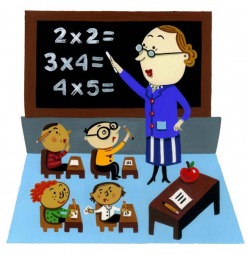Proximity and Mobility
According to Jones there are three rules of movement. "Constantly change the zones of proximity so that not one is in the green zone for very long, stimulate the brain to attend by constantly changing everyone's visual field, and use movement as camouflage for dealing with disruptive students (p. 34). Teachers should make eye contact with students as a reminder that you are watching them even though you are not right next to them. Supervising the students during guided pdractice by walking around checking on student's progress helps teachers monitor and adjust student's behavior allowing teachers to get discipline management for free. (Jones pg. 35)
Movement and Mobility

With proximity and mobility you always want to be moving around the room. By being mobile, students will continue to be in the different zones for better control. For example, when students are in the red zone, it means stop what you are doing because the teacher is in very close proximity, within 8 feet. Very few problems occur in the red zone. The yellow zone is when the teacher is within 8-14 feet from you and the student will proceed with caution. Make sure your back is not turned away from the students. The green zone means "go" as the teacher is more than 14 feet away and the students will play and goof off.
By moving among the students, you can work your way to a student, camouflaging yourself, without distrubing the class to redirect a student off task. By working the crowd, the teacher walks among the sstudents, in the zone of proximity of all zones.
"And you must commit yourselves wholeheartedly to these commands that I am giving you today. Repeat them again and again to your children. Talk about them when you are at home and when you are on the road, when you are going to bed and when you are getting up." Deuteronomy 6:6-7 (NLT)
The relevance of the scripture is we as teachers need to remember how improtant it is to remember that students need to learn to maintain self-control.
